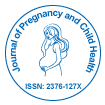当社グループは 3,000 以上の世界的なカンファレンスシリーズ 米国、ヨーロッパ、世界中で毎年イベントが開催されます。 1,000 のより科学的な学会からの支援を受けたアジア および 700 以上の オープン アクセスを発行ジャーナルには 50,000 人以上の著名人が掲載されており、科学者が編集委員として名高い
。オープンアクセスジャーナルはより多くの読者と引用を獲得
700 ジャーナル と 15,000,000 人の読者 各ジャーナルは 25,000 人以上の読者を獲得
インデックス付き
- 索引コペルニクス
- Google スカラー
- アカデミックキー
- レフシーク
- ハムダード大学
- エブスコ アリゾナ州
- OCLC-WorldCat
- パブロン
- ジュネーブ医学教育研究財団
- ユーロパブ
- ICMJE
役立つリンク
オープンアクセスジャーナル
このページをシェアする
抽象的な
Labor Induction in Primiparous Women and Women with an Unripe Cervix-1
Anna Thorbiornson, Tomislav Vladic and Ylva Vladic Stjernholm
Objective: To compare the efficacy and safety of oral prostaglandin in solution, vaginal prostaglandin gel and trans cervical catheter for labor induction in primiparous women and women with an unripe cervix. Design: A retrospective study. Methods: Data from original obstetric records at a university hospital in Sweden in 2012-2013. Results: In primiparous women, vaginal birth <24 h was achieved in 54% with oral prostaglandin, 71% with vaginal prostaglandin, and 71% with catheter, whereas caesarean section was needed in 25%, 41% and 26% respectively. In women with an unripe cervix, vaginal birth <24 h was achieved in 66% with oral prostaglandin, 79% with vaginal prostaglandin, and 77% with catheter, while caesarean section was carried out in 21%, 33% and 21% respectively. The induction to vaginal delivery interval was the shortest with catheter and the longest with oral prostaglandin. The rates of obstetric bleeding, chorioamnionitis, uterine hyper stimulation and neonatal asphyxia were comparable. Conclusion: Oral prostaglandin in solution was less effective than vaginal prostaglandin gel and transcervical catheter in achieving vaginal birth <24 h. However, oral prostaglandin and catheter were safer, since they resulted in fewer caesarean sections without increasing maternal morbidity or neonatal asphyxia.

 English
English  Spanish
Spanish  Chinese
Chinese  Russian
Russian  German
German  French
French  Portuguese
Portuguese  Hindi
Hindi